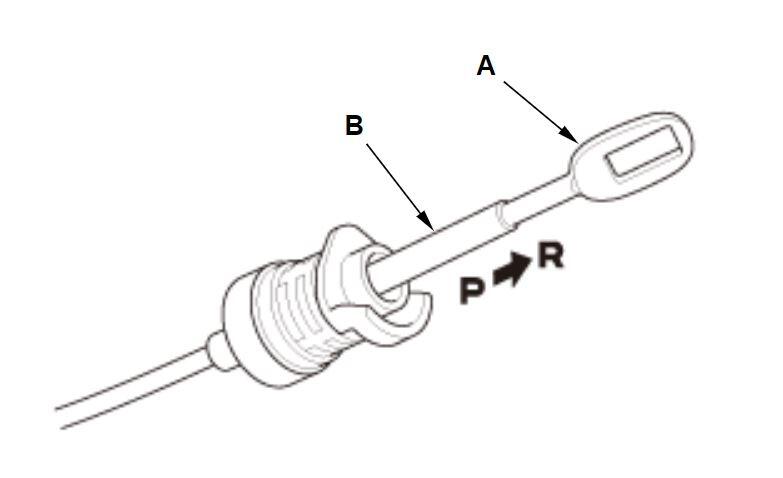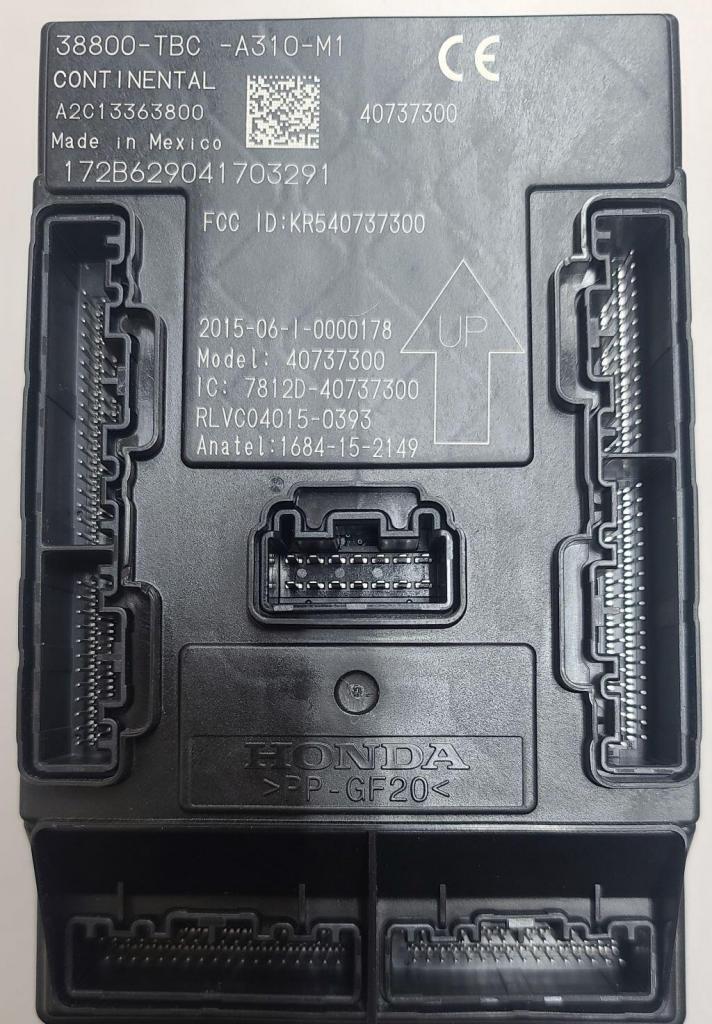A 2017 Honda Civic comes in with a dead battery. If a Honda car is towed in, it’s usually because it won’t crank or start, and we replace a lot of Honda starter motors to repair this type of issue. This Honda Civic was a bit different – it starts up on its own. We’d turn it off and it would turn itself back on. Weird huh.
High tech features are cool…. when they work. Proximity keys are hardly new technology at this point, but they’re a great example of a technology that’s nice to have, but far from necessary. All it takes is a frustrating and expensive failure to wax nostalgic for the good old days when you could start and stop your car with a simple key that you turned in a simple ignition lock.
So this 2017 Civic is towed in. The battery is dead. As soon as we connect a booster pack, the car turns on. That can be normal because in smart key systems, the unit that controls the power will almost always return to its last state (OFF, ACC, or ON).
No problem. I press the power button and turn the car off. The car shuts down, but then it turns itself back on. Weird. I try again with the same results.
Technical Service Bulletin
Often when there’s an unusual problem with a car, the manufacturer will issue a TSB (technical service bulletin). There weren’t any related TSBs, but there was a Honda Service News article that seemed like it might apply, titled: “Engine Shuts Off, but Ignition Stays in ON or ACCESSORY”. On this 2017 Honda Civic, the engine and ignition did turn off, but then the power mode switched to ON by itself. The issue according to the article was a misadjusted shift cable.
It only takes a moment to connect a scanner and see if the computer can “see” that the transmission is in park, so we did. Unfortunately, the misadjusted shift cable wasn’t the issue in this case.
B12D3
We found a trouble code B12D3, “Power Control Unit (Body Control Module) IG Latch Circuit Error”. The flow chart is simple.
- Clear the code
- Turn the car off and on five times
- If the code resets, replace the BCM (body control module)
It seems pretty straight forward, but you have to trust that the service manual authors have thought of all of the possibilities and are giving the correct advice. If we were to follow the diagnostic procedures in the service manuals without using a little common sense, we’d be replacing a lot of parts unnecessarily. The manuals are frequently wrong, and in general customers don’t want to pay for expensive parts that don’t fix their cars.
Here’s an example of just how bad service manuals can be. This is the procedure for adjusting the shift cable for the same car.
- 1. Push the shift cable (A) until it stops, then release it.
- 2. Pull the shift cable back one step from the P position so that the shift position is in R.
- 3. Turn the vehicle to the ON mode.
- 4. Check that the R indicator comes on.
- 5. Turn the vehicle to the ACCESSORY mode.

No wonder they have issues with shift cable adjustment! The instructions are clearly missing several steps.
Go with the flow
In this case, there was nothing we could do but to follow the flow chart. I suppose we could check signals on some of the pins at the body control module, but there’s really no way to be sure about anything. These days cars are digital. Ones and zeros can be seen with an oscilloscope, but I have no idea how to read the language. Could something be telling the BCM to turn the ignition on? I don’t know. My only real choice is to do what Honda told me to and put a new BCM in.
Searching for validation
Before spending some of our customer’s hard earned money, I thought I’d spend a little time to see if anyone else had run into the same issue. I started by checking Identifix, a subscription website with data on automotive symptoms and “fixes”. Lots of reports of Honda starter motor replacement, but that’s not our issue. I didn’t find any reports of B12D3 on this model. Next I called the parts department at Oakland Honda and asked how many times they had sold the body control module for this car (38809-TBC-A31). They had sold one unit, but that didn’t inspire too much confidence.
Order and install the part
The next day the BCM arrived and I installed it in the car. Fingers crossed, I connected the battery, which I had charged and disconnected to prevent it from being drained again. The car didn’t turn itself on. Of course I couldn’t turn it on either because the BCM is an integral part of the immobilizer system. Regardless, so far so good.

Dealing with Honda and the Immobilizer
I’m a licensed locksmith. As such, I can get key codes and immobilizer reset codes from the manufacturer…. at least in theory. Honda provides locksmith data with a small fee and appropriate credentials. That is, when their SDRM system isn’t down, which isn’t infrequent.
If I can use an aftermarket tool to get around working with Honda’s official channel, I will. However, I’ve had poor luck with Honda vehicles that are less than 5 years old, so I collected the required documentation from the Civic’s owner: registration and a driver’s license and started the process. I fill out an online form and upload my proof of ownership documentation to NASTF, then I log into Honda’s website and purchase an immobilizer code. The code is calculated based on the VIN, and is valid for one day.

Badly engineered electronics don’t belong in cars
If a $23 Bluetooth headset you from Amazon is buggy or breaks after a few months use, well, that’s how things go sometimes. It probably won’t even upset you enough to leave a 1 star review. Consumer electronics are disposable and their journey from factory to landfill is often measured in months rather than years. A car on the other hand, well that should last at least 10-20 years as long as it’s maintained.
It’s not just a financial issue. A car is a potentially lethal device. In fact, if you are under 45, you’re more likely to die in a car crash than any other way. Critical electronics should be engineered to be robust, and continue to work reliably long past the car’s expected life span. I’d call a module that controls whether the car is on or off pretty critical.
A happy ending
Well, it’s a bit of an anti-climactic ending, but after installing the BCM, the car worked normally. It made for a good day for both us and our customer, but doesn’t make a for much of a story. Why write it? Well some day, some poor guy is going to be struggling with a choice; should he take a risk and order a BCM based on a three step diagnostic tree in a badly-written service manual, or should he cut his losses and ship the car off to a dealership. This article was for you. Good luck! (and no warranties expressed or implied)
